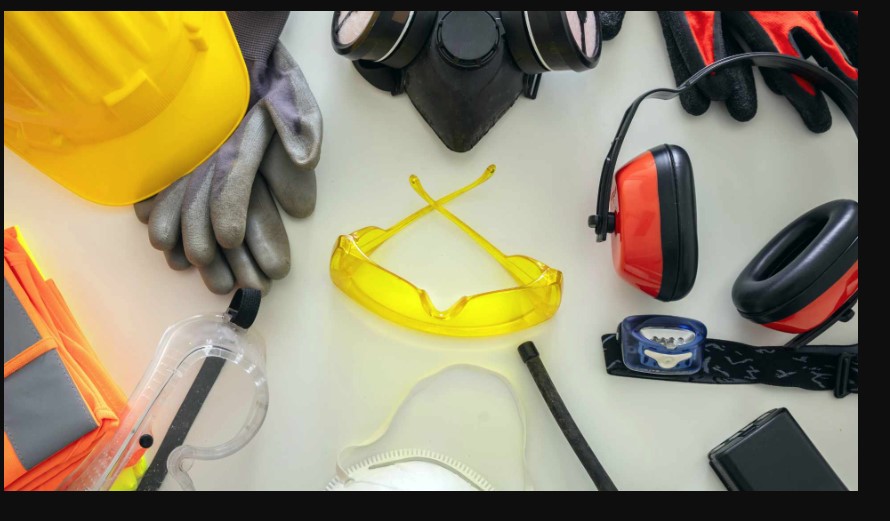Are you a DIY enthusiast who loves tackling home improvement projects?
While DIY projects can be advantageous, they can also pose various hazards. Proper personal protective equipment (PPE) ensures your safety. Think of PPE as your superhero suit, protecting you from potential dangers.
Let’s dive into the seven essential PPE items every DIYer should have to stay safe and injury-free.
Introduction
Embarking on DIY projects can be both exciting and challenging. Whether renovating a room, building furniture, or fixing things around the house, safety should always come first. Proper PPE can prevent accidents and injuries, allowing you to focus on the task without worry. Let’s explore the seven must-have PPE items that every DIYer should include in their toolkit.
Safety Glasses
1. Protecting Your Eyes
During DIY projects, your eyes are incredibly vulnerable to dust, debris, and chemical splashes. Safety glasses act as a shield, protecting your eyes from potential harm. Whether cutting wood, sanding, or using power tools, always wear safety glasses to prevent injuries.
2. Types of Safety Glasses
Various types of safety glasses are available, including those with anti-fog coatings, UV protection, and adjustable frames for a comfortable fit. Choose a pair that suits your needs and ensures clear vision while you work.
Hearing Protection
1. Why Hearing Protection is Essential
Loud noises from power tools, saws, and drills can cause permanent hearing damage. Hearing protection, such as earplugs or earmuffs, helps reduce noise levels and protects your ears from excessive sound exposure.
2. Choosing the Right Hearing Protection
Earplugs are small and convenient, while earmuffs provide more coverage and are easier to wear for extended periods. Look for hearing protection with a high Noise Reduction Rating (NRR) to ensure maximum safety.
Respirators and Dust Masks
1. Importance of Respiratory Protection
DIY projects often involve dust, fumes, and chemical vapors that can be harmful when inhaled. Respirators and dust masks filter out these particles, preventing respiratory issues and ensuring you breathe clean air.
2. Types of Respirators and Masks
An essential dust mask may suffice for simple tasks like sanding or sawing. Consider a respirator with replaceable filters for more intensive projects involving chemicals or fine particles for better protection.
Work Gloves
1. Protecting Your Hands
Your hands are your most valuable tools during DIY projects. Work gloves protect against cuts, abrasions, splinters, and chemical exposure. They also improve grip, making it easier to handle tools and materials.
2. Selecting the Right Work Gloves
Choose gloves made from durable materials like leather, nitrile, or latex, depending on the task. Ensure they fit snugly but comfortably, allowing you to perform tasks without restriction.
Protective Clothing
1. Shielding Your Body
Protective clothing, such as coveralls or aprons, shields your body from dirt, debris, and spills. It also prevents your regular clothes from getting damaged or stained.
2. Features to Look For
Opt for protective clothing that is durable, easy to clean, and provides adequate coverage. Some options include additional features like reinforced knees, multiple pockets, and adjustable straps for convenience.
Sturdy Footwear
1. Importance of Foot Protection
Proper footwear protects your feet from falling objects, sharp debris, and slippery surfaces. Sturdy, closed-toe shoes with non-slip soles provide the best protection.
2. Types of Protective Footwear
Consider steel-toe boots for heavy-duty projects, as they offer extra protection against heavy impacts. Durable sneakers or work shoes with good traction will suffice for lighter tasks.
Hard Hats
1. When to Wear a Hard Hat
Wearing a hard hat is essential if your DIY project involves working in areas with a risk of falling objects or head injuries. Hard hats are designed to absorb impact and protect your head from serious injury.
2. Features of a Good Hard Hat
Look for hard hats that are lightweight, adjustable, and meet safety standards. Some models have additional features like built-in visors or sweatbands for comfort and protection.
Bonus Tips for Staying Safe
1. Stay Organized
To prevent accidents, keep your workspace tidy and organized. Properly store unused tools and materials, and ensure that pathways are clear of obstacles.
2. Take Breaks
DIY projects can be physically demanding. Take regular breaks to rest and hydrate, reducing the risk of fatigue-related accidents.
3. Follow Instructions
Always read and follow the instructions for your tools and materials. Proper usage and maintenance can prevent many common DIY accidents.
FAQs
1. Do I need to wear all PPE items for every DIY project?
Not necessarily. The PPE you need depends on the specific task and associated hazards. Assess the risks and use the appropriate PPE for each project.
2. How often should I replace my PPE?
Replace PPE items when they show signs of wear or damage. For items like respirators and filters, follow the manufacturer’s guidelines for replacement.
3. Can I use regular sunglasses as safety glasses?
No, regular sunglasses do not provide the same level of protection as safety glasses. Safety glasses are designed to withstand impact and protect against debris and chemicals.
4. What should I do if my PPE gets damaged during a project?
Stop working immediately and replace the damaged PPE before continuing. Using compromised protective equipment can increase the risk of injury.
5. Are there any PPE items specifically for working with electricity?
When working with electricity, use insulated gloves, protective eyewear, and non-conductive footwear to reduce the risk of electrical shock.
Conclusion
Safety should always be your top priority when tackling DIY projects. You can confidently and safely work on your home improvement tasks with the proper personal protective equipment. From safety glasses to sturdy footwear, each piece of PPE is crucial in keeping you protected.
So, gear up and enjoy the satisfaction of completing your projects while staying safe and sound.


